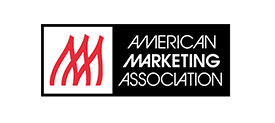Consumers have long been trained to associate certain colors with specific brands. Take rental cars: I’m confident if I show you the color red and ask you about a rental car brand, you’ll think of Avis, orange will make you think of Budget, gold will make you think of Hertz, and you’ll associate green with National. Similarly, in the telecommunications business, it’s as if representatives from AT&T, Verizon, T-Mobile and Sprint sat around a table and divided the color wheel.
Tiffany & Co. blue is unmistakable (and trademarked), UPS is synonymous with brown and John Deere associates with forest green. Such examples establish the brands’ identities with a clarity that is enviable as brands across sectors struggle to differentiate themselves. But does anybody care? After all, the fact that UPS is associated with brown doesn’t really say anything about the brand, does it? And what does red say about Avis or green about National?
Being associated with a color is a hugely valuable asset for any brand. One of the biggest challenges for brand marketers is to generate instantaneous brand recognition whenever their target consumers encounter the brand, whether in advertising, in store or other via other touch points. Owning a color can prompt brand identification, allowing consumers to know how to find the product and instantly recognize it.



